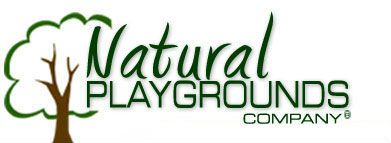Sand is one of the few manipulatives that truly allows children to explore their imaginations. Unfortunately, in most play settings, sand is treated as just one more controlled play item: it’s kept in containers until it’s used in a plastic “sand table.”
The beauty of sand, is that it’s a material found almost everywhere on earth, so it’s unsettling that children see it stored in table or in a bucket on a shelf along with crayons and toys, totally disconnected from its natural setting. Not much of it fits in a sand table, and there’s no room to build anything complex, such as road systems or mountains. Children stand at the table, rather than play on their hands and knees, and many are required to wear aprons so they don’t get dirty.
We’re pretty certain that these are not good lessons for children.
Children also find sand boxes limiting. Whenever we’ve seen a sandbox adjacent to a sand pile, children are never in the confined box. They’re always in the free-form area, playing with abandonment.
When sand is where it’s supposed to be, children love playing in it. They can dig to China, find “fossils,” hunt for gems, make roadways, build mountains, create waterways, build sand castles, dig tunnels, and discover hidden treasures. If they mix sand with water, they can make shapes of almost any kind.

